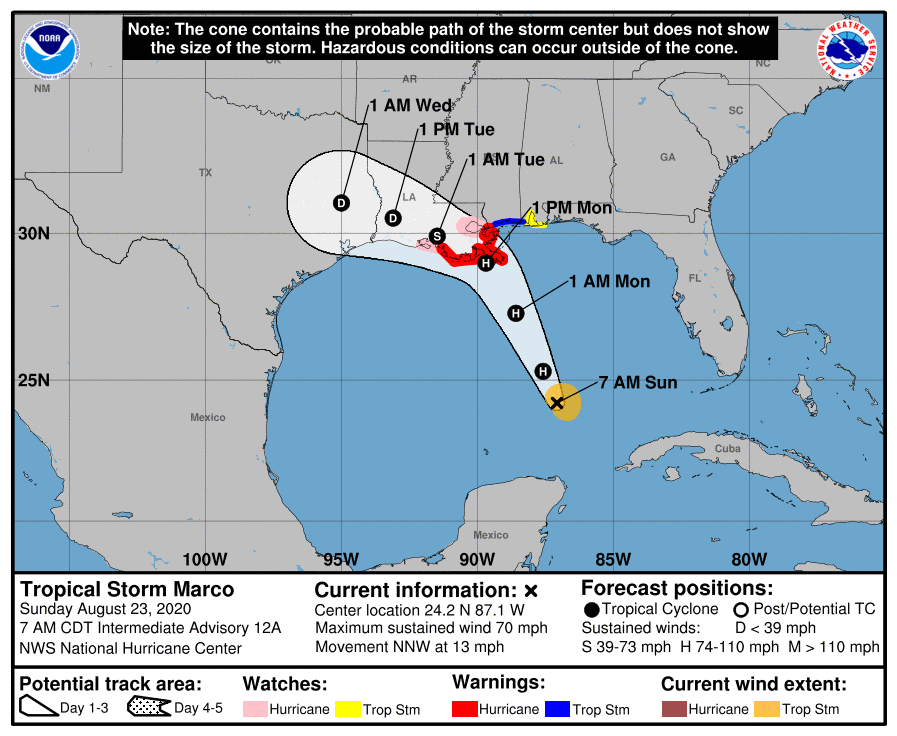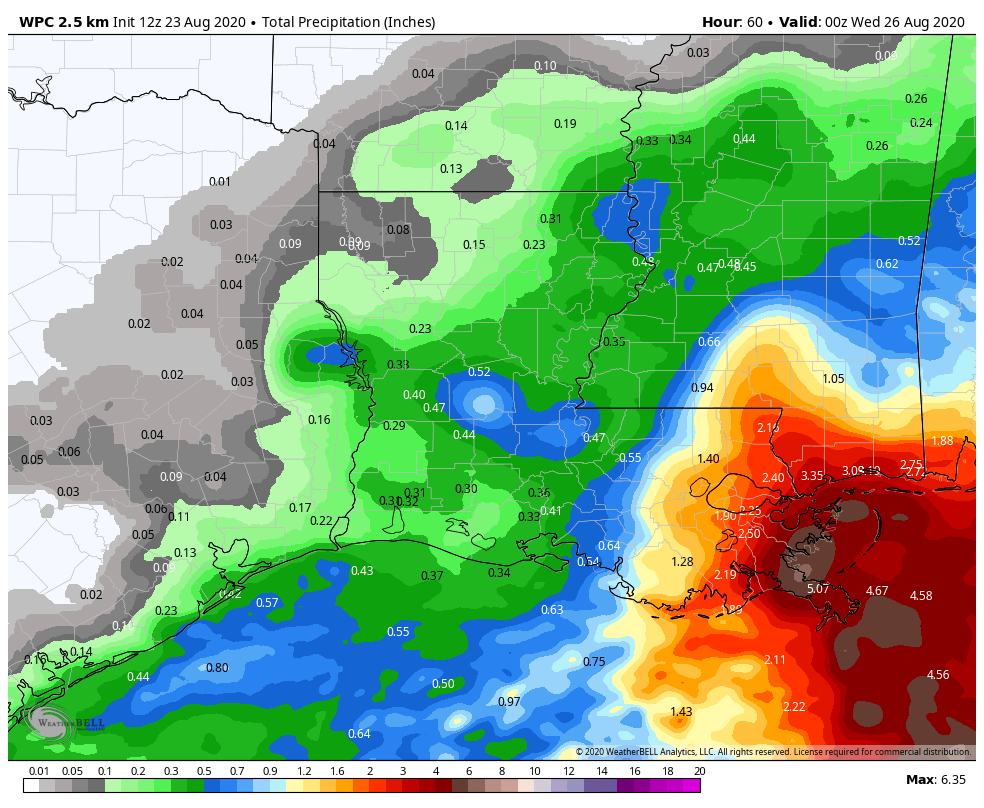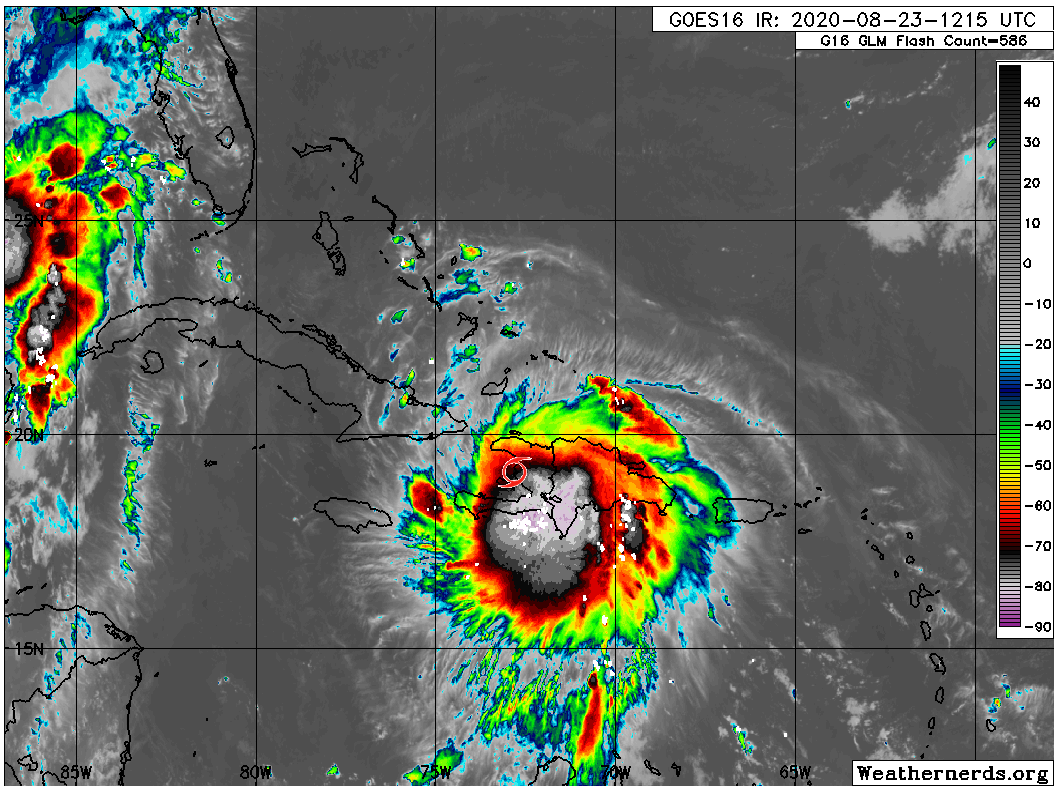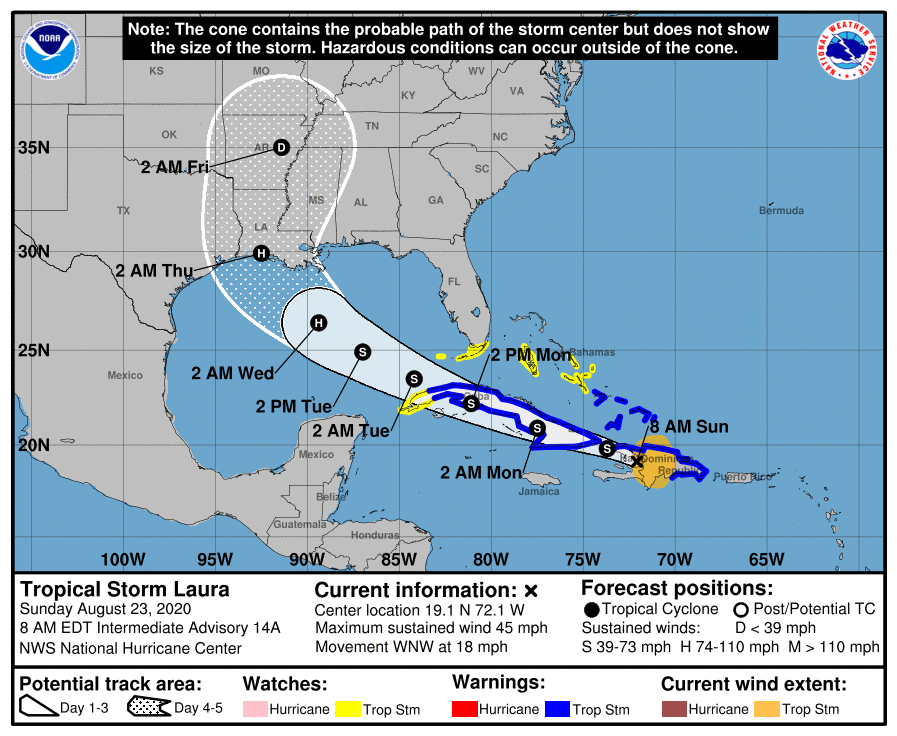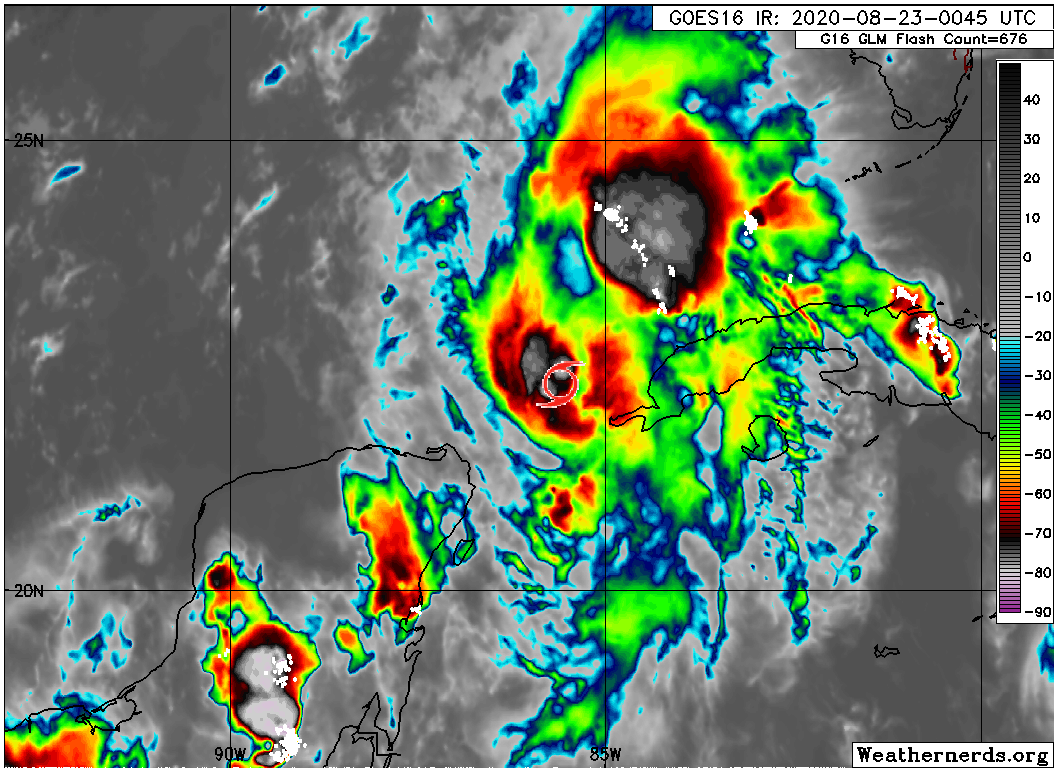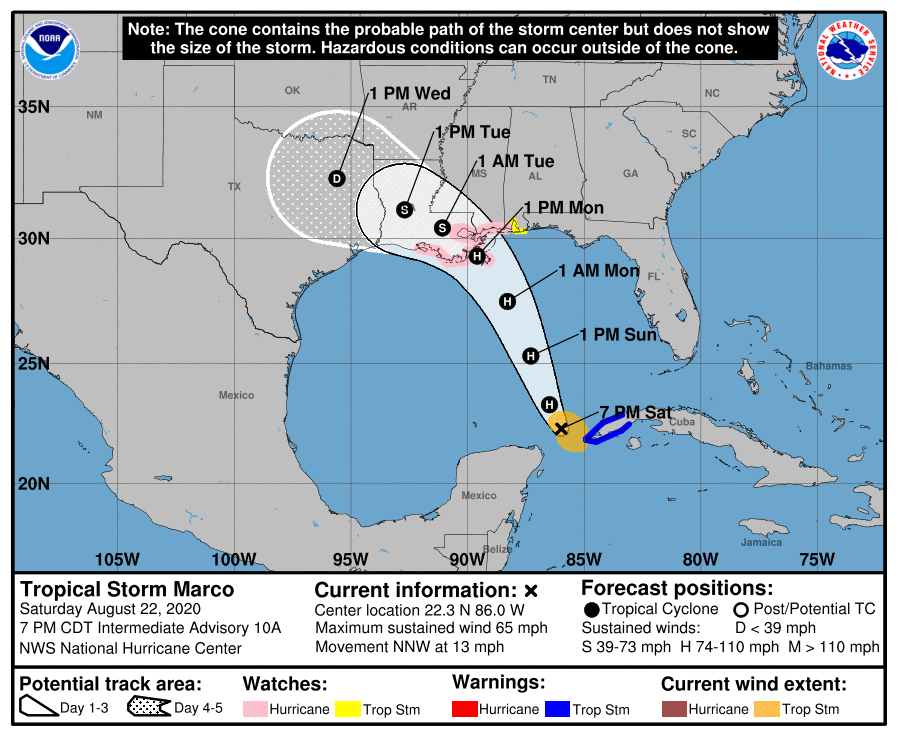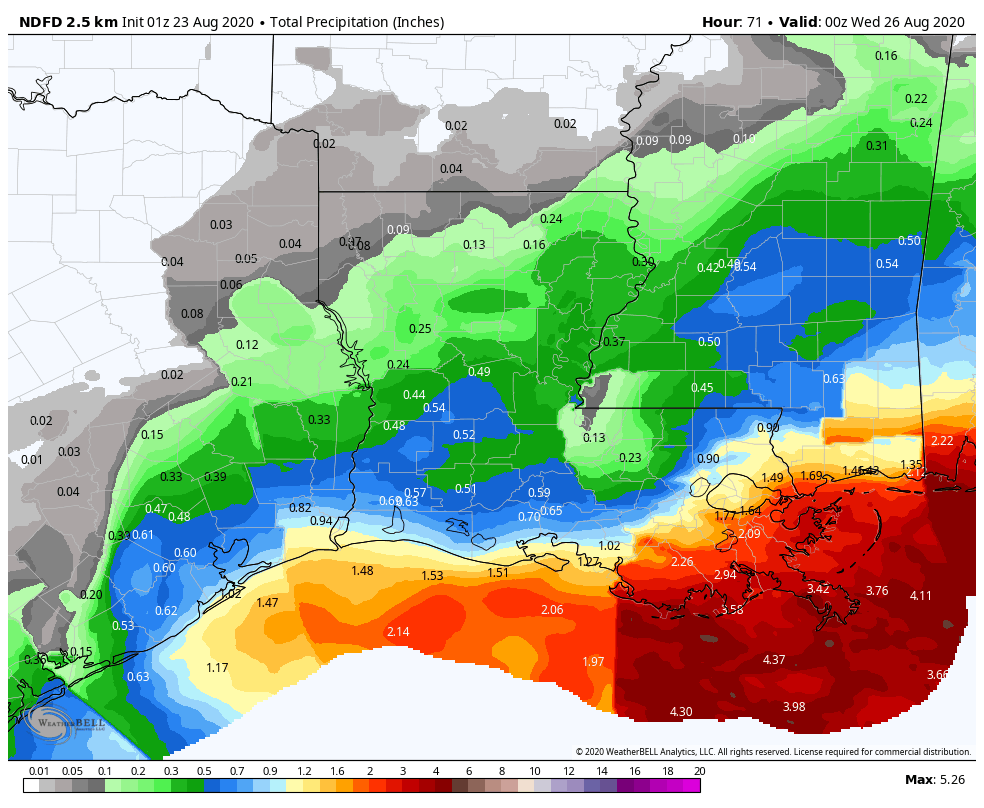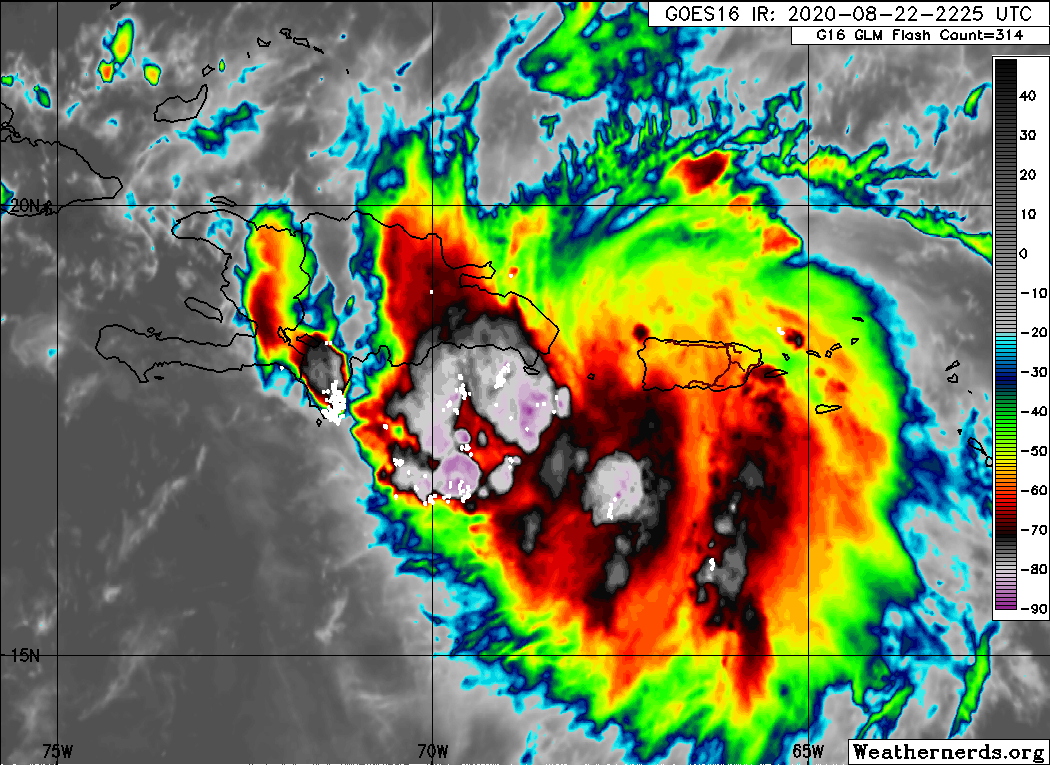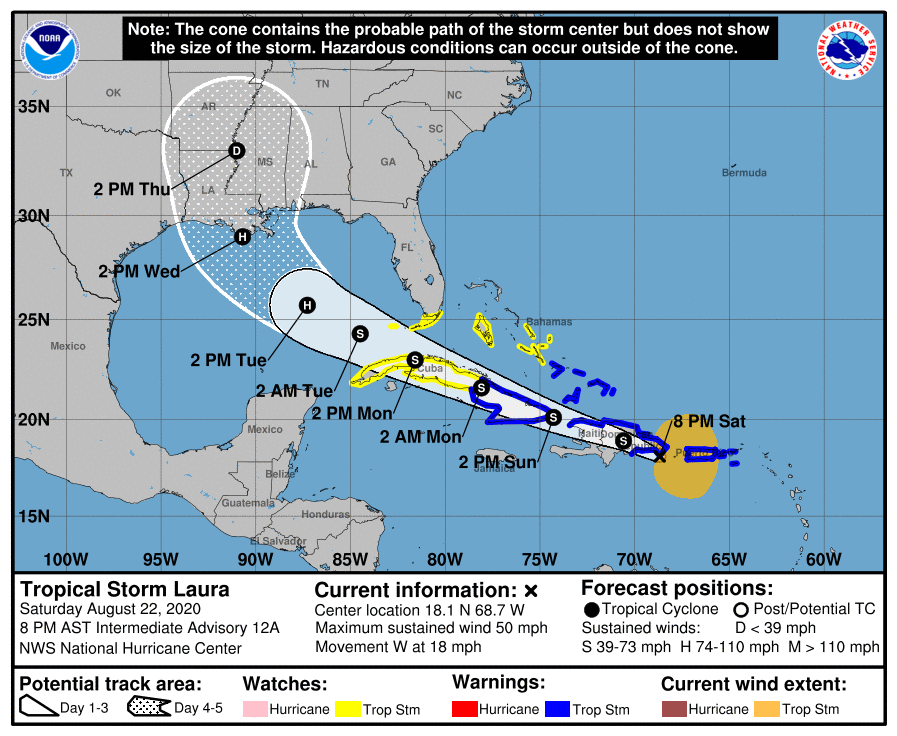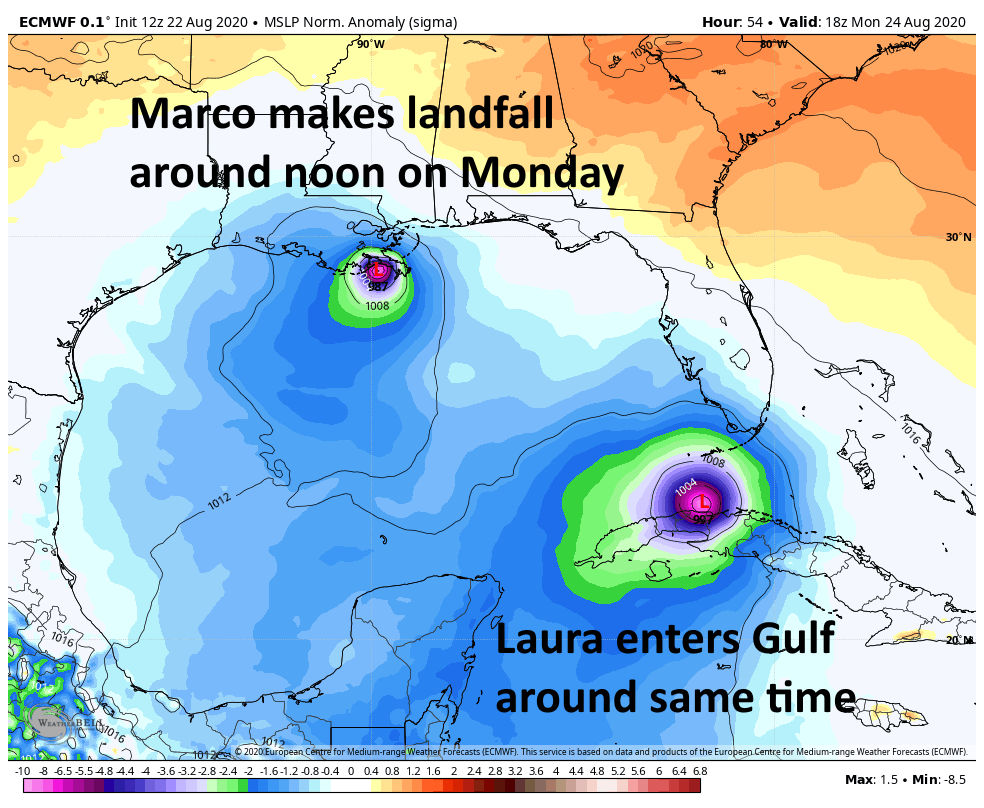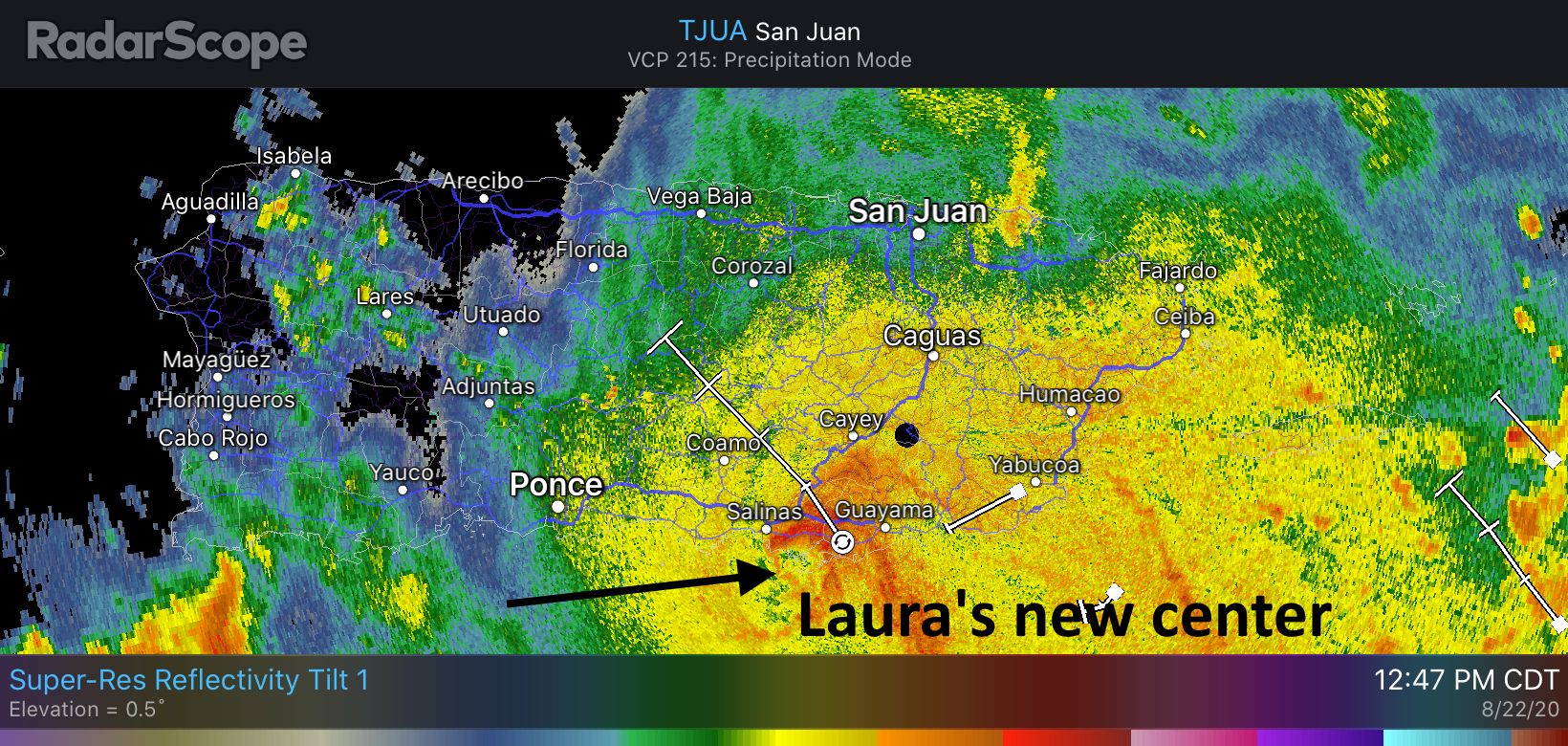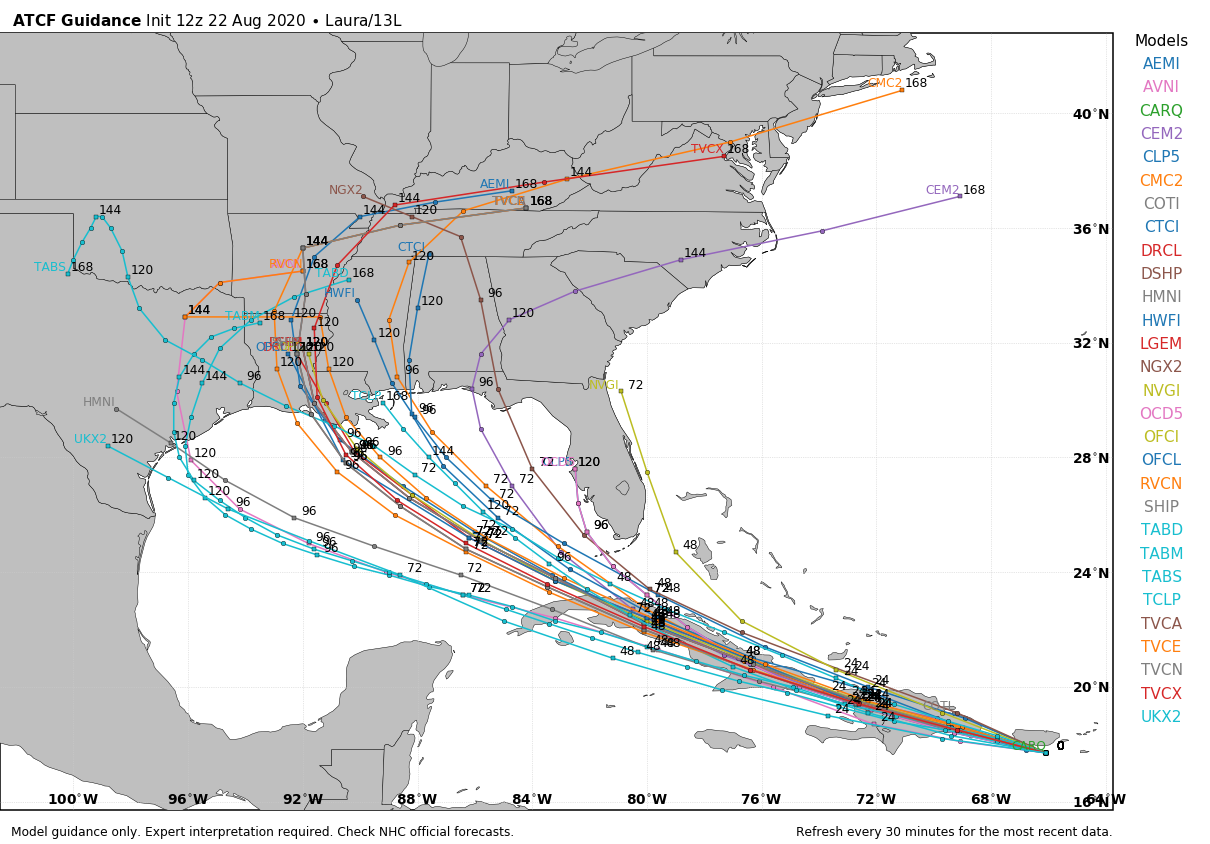Good afternoon. There’s a lot of ground to cover in this post, but we wanted to start with this: Tropical Storm Laura remains the region’s primary threat, and you really need to be paying attention. Today, you should be thinking about what you would do if a strong hurricane were to make landfall over the Houston-Galveston metro area on late on Wednesday or Thursday. Let us be clear: We are not saying that is going to happen. But it is well within the realm of possibility, and you should be thinking about what actions you would take, so that you are ready put them into play when the forecast tightens up.
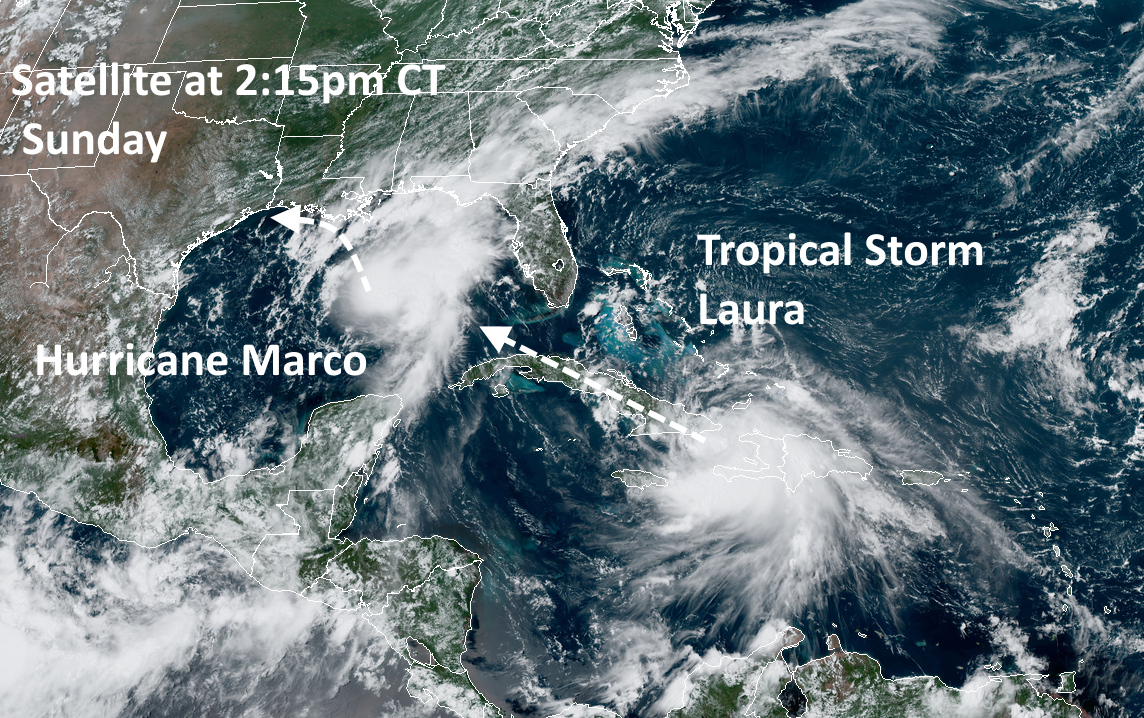
For this post, we will discuss the forecast for Marco, briefly, and Laura. And we will also try to answer some of your basic questions about impacts, evacuations, and more.
Hurricane Marco
Marco became a hurricane today, with 75 mph winds. The storm is moving north-northwest at 14 mph, and this should bring its center very near the Louisiana coast by Monday evening. We still aren’t sure whether this storm will move all the way onshore Louisiana, or remain near the shore, and then start to fall apart as it tracks westward along the Louisiana coast toward Texas. However, because most of the winds and heavy rainfall should remain to the east and north of the center, we do not anticipate severe conditions in the Houston region from Marco.
Probably the most significant thing about Marco now is that it seems plausible that the storm will slow down enough to potentially interact with Laura. This would not create some kind of “super storm” but may play some role in the track of Laura. Here’s one possibility:
A note on the 12Z ECMWF:
The rightward track of #Laura into SE Louisiana appears to be due to #Marco falling apart on the model, leaving its remnants in the gulf, which then pivot Laura to the right. Can’t guarantee this doesn’t happen, but so far, Marco is holding together. pic.twitter.com/3f9puGOiFQ
— Levi Cowan (@TropicalTidbits) August 23, 2020
Tropical Storm Laura
This system remains the key threat. Laura has moved across Hispaniola and maintained a reasonable structure. It will now spend Sunday night and most of Monday moving across Cuba before emerging into the Gulf of Mexico on Monday evening. Thereafter Laura will have 48 to 60 hours over warm waters, and an atmosphere favorable to intensification. It is reasonable to expect anything from a Category 1 to Category 4 hurricane to spin up on Tuesday or Wednesday over the open Gulf of Mexico. The situation is further complicated by Marco, which will not be all that far ahead of Laura, and the two systems may interact in ways that are difficult to predict even by the most sophisticated computer models in the world.
We simply have not received much clarity today in regard to a track forecast today. As a result, the National Hurricane Center’s 10am CT forecast track for Laura (shown below) is unlikely to shift much. Because of the broad uncertainty in the global model ensembles we are still reasonably looking at a track anywhere from Matagorda Bay, up through Houston, Beaumont, and across much of the Louisiana coast. For this reason, it’s probably not worth paying much attention to the “skinny black line” right now.
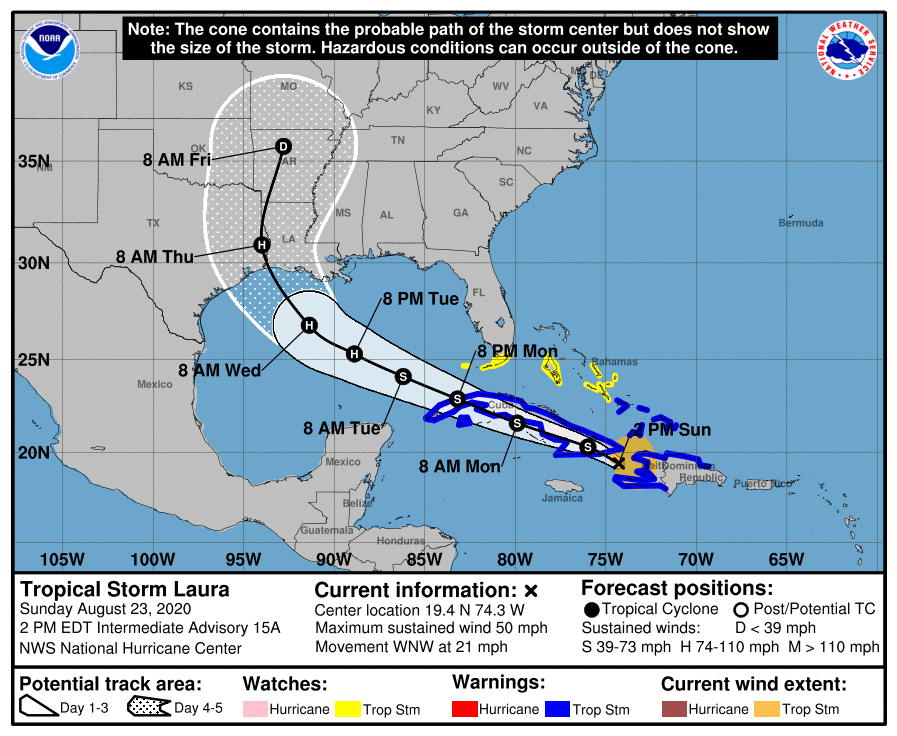
I think the hurricane center’s forecast is about as good as you could get considering all the uncertainties, but the bottom line is that this forecast can and probably will shift rapidly over the next day or so. Sorry, I know you want definitive answers. We don’t have them, and I wouldn’t trust anyone who says they do.
Alright, let’s get to some your most frequently asked questions below.


